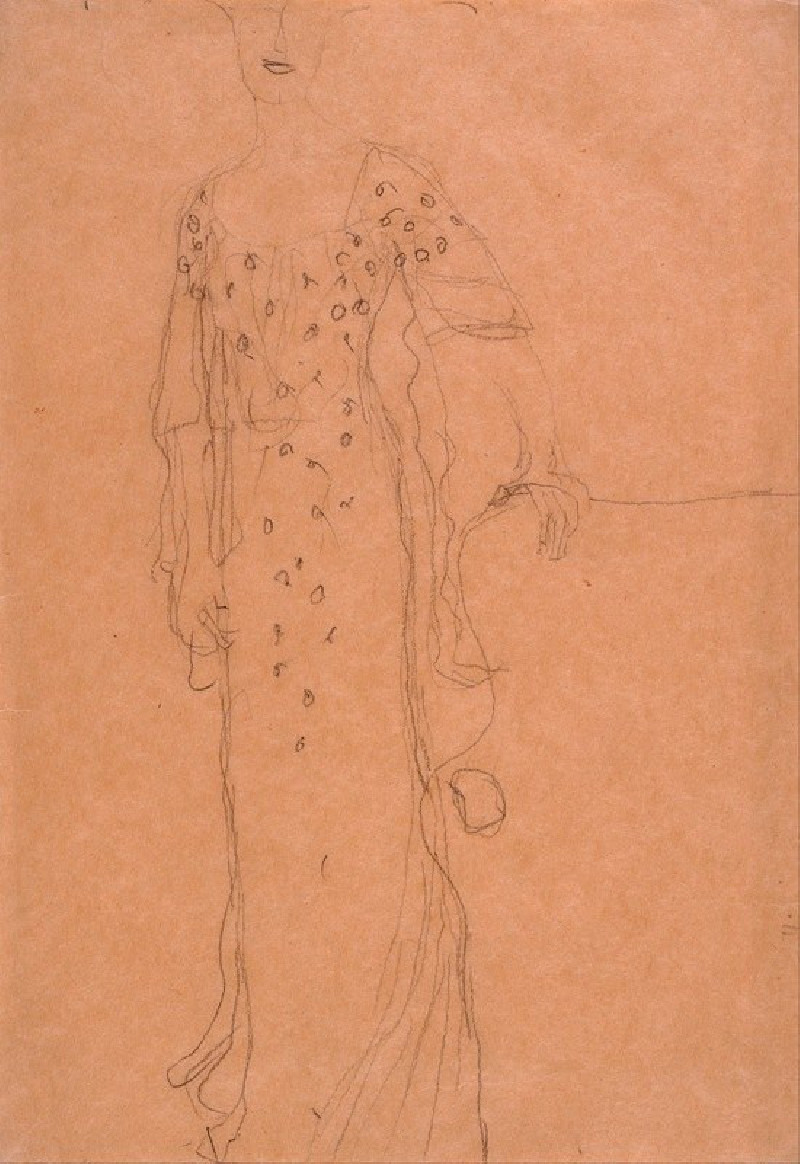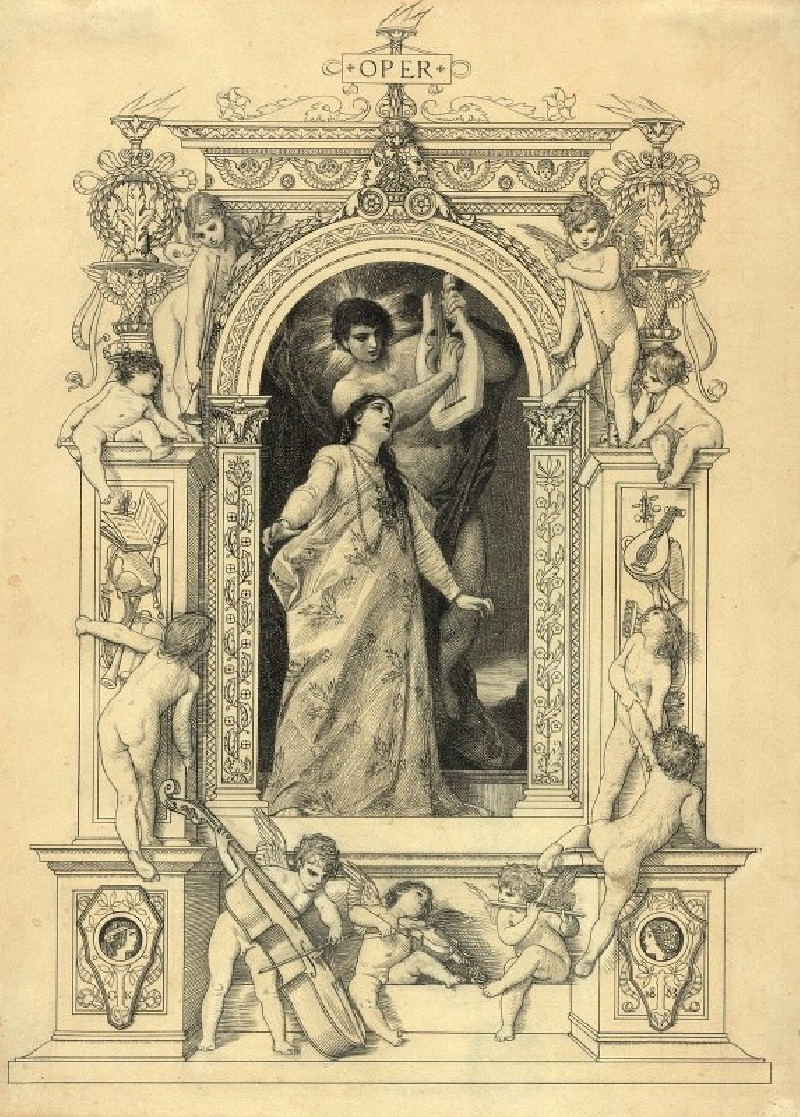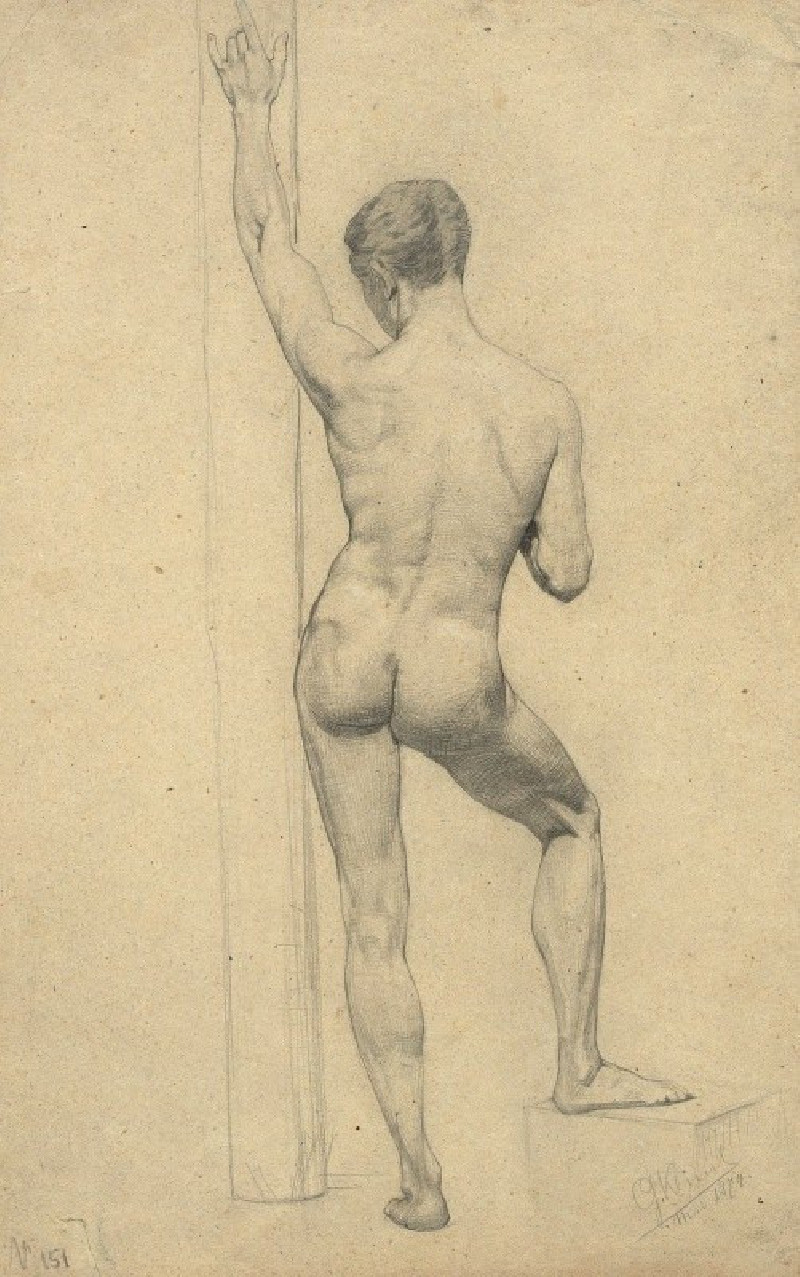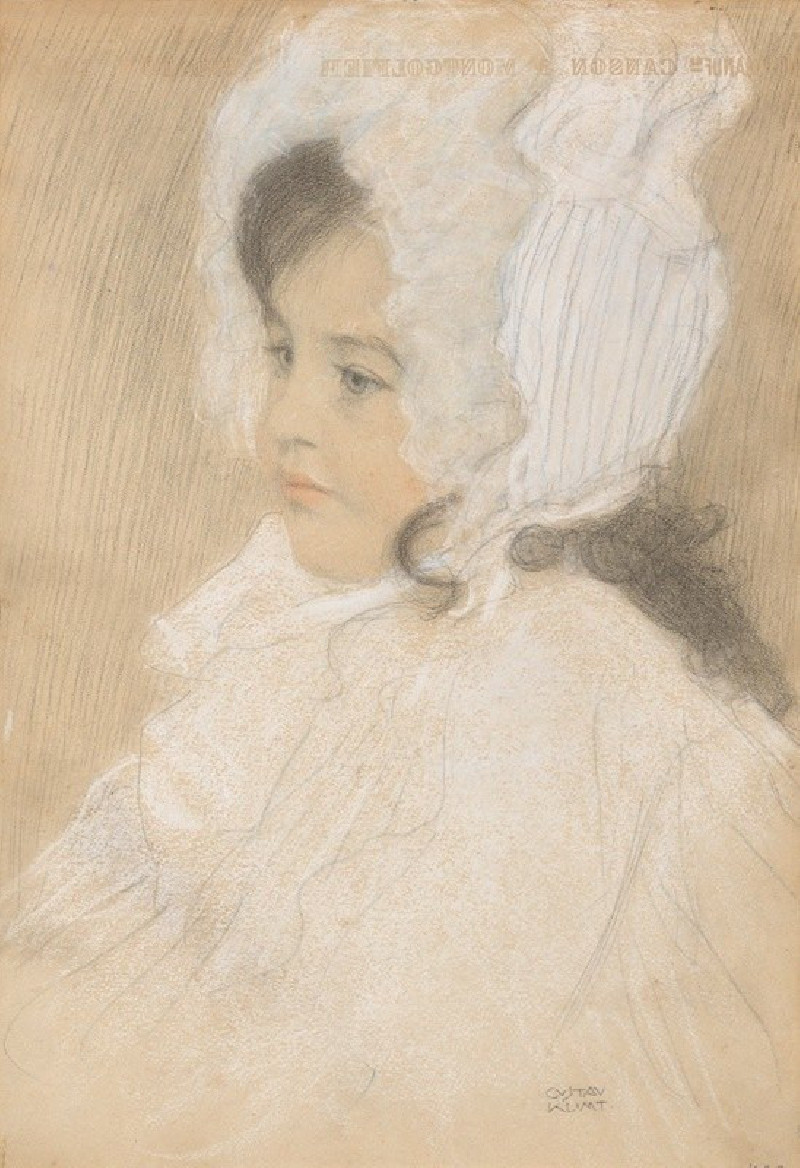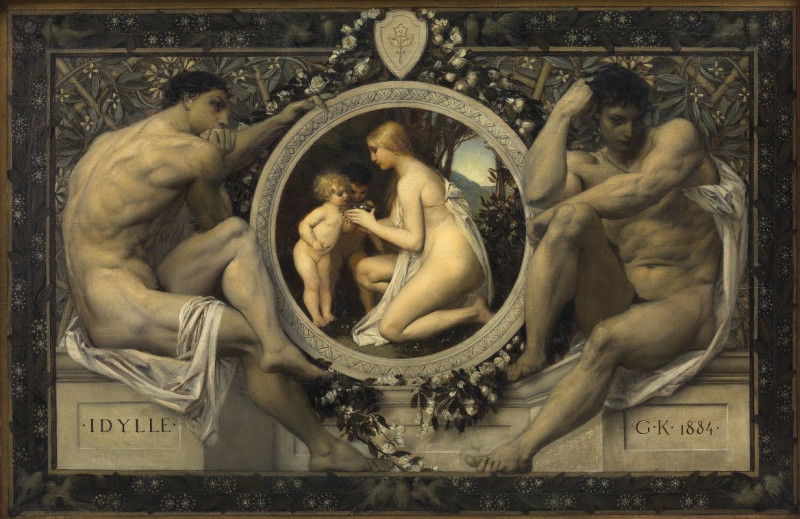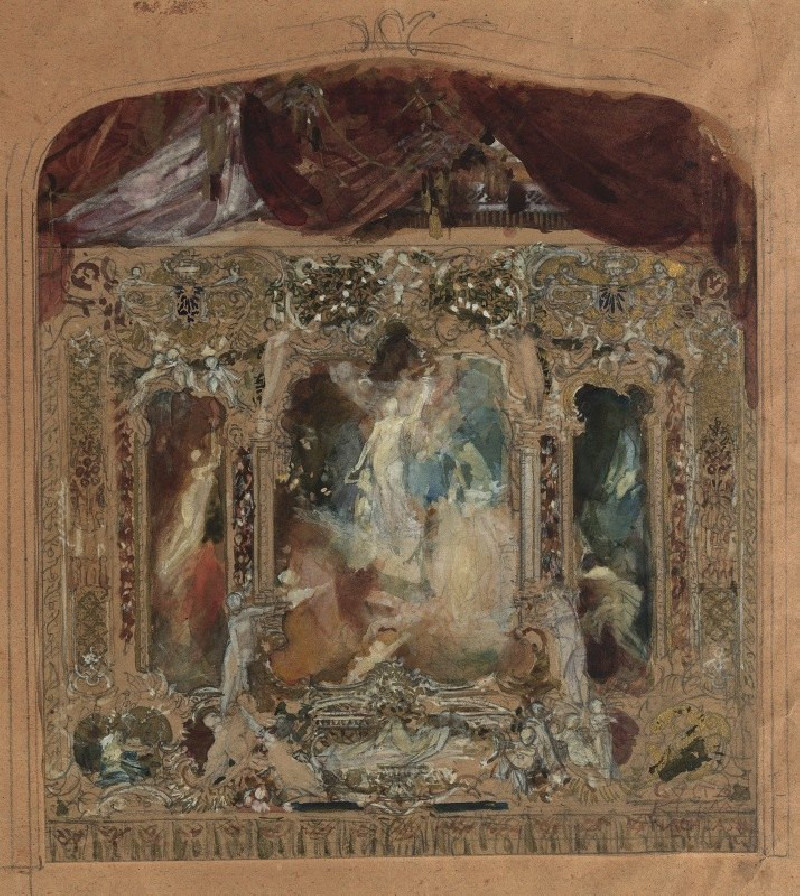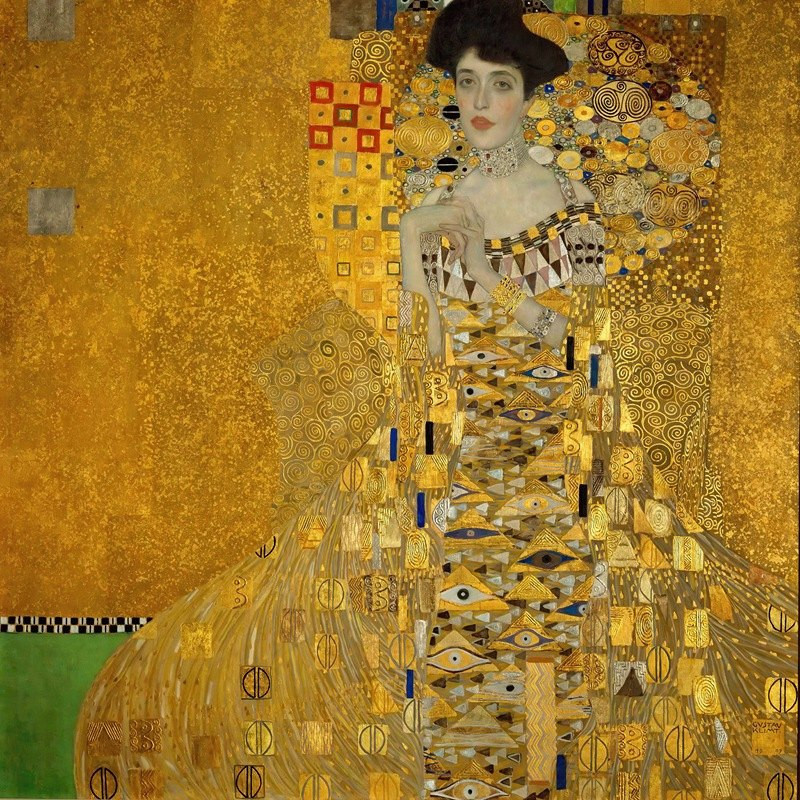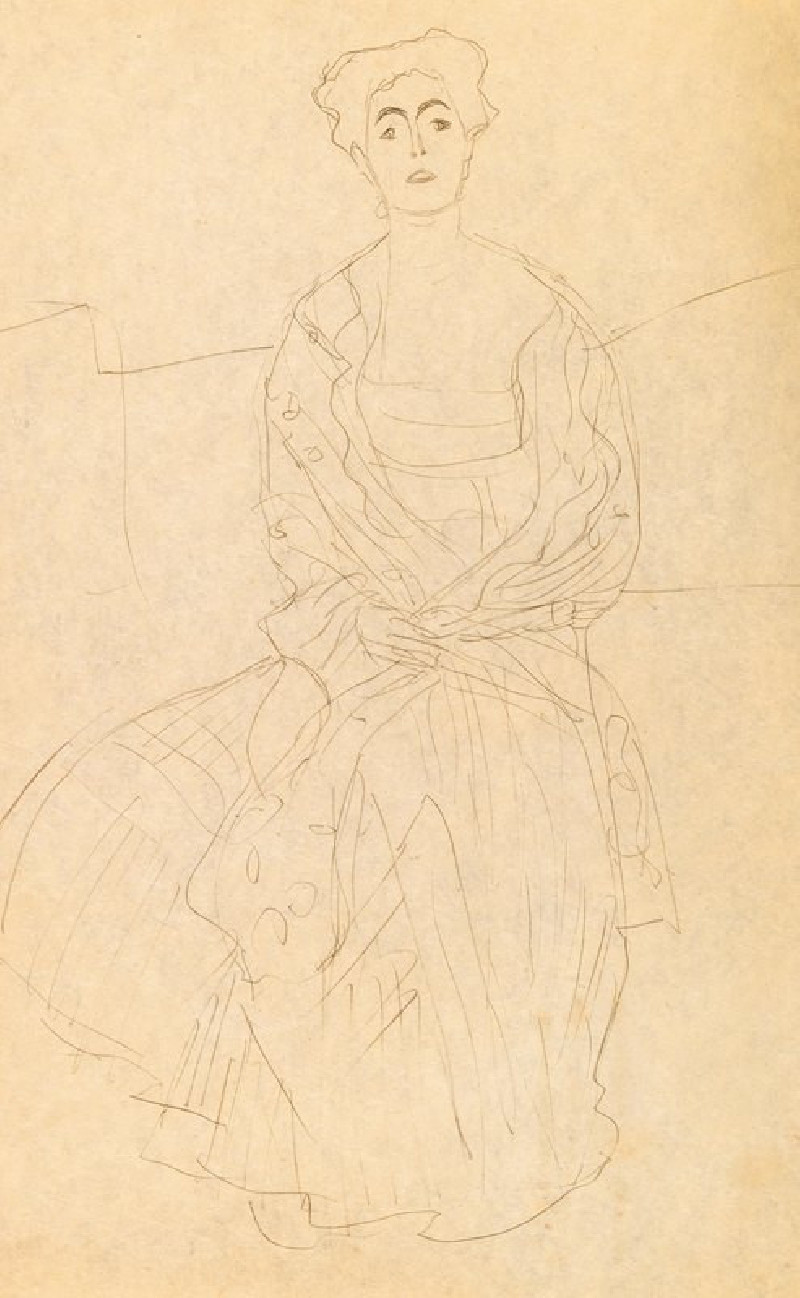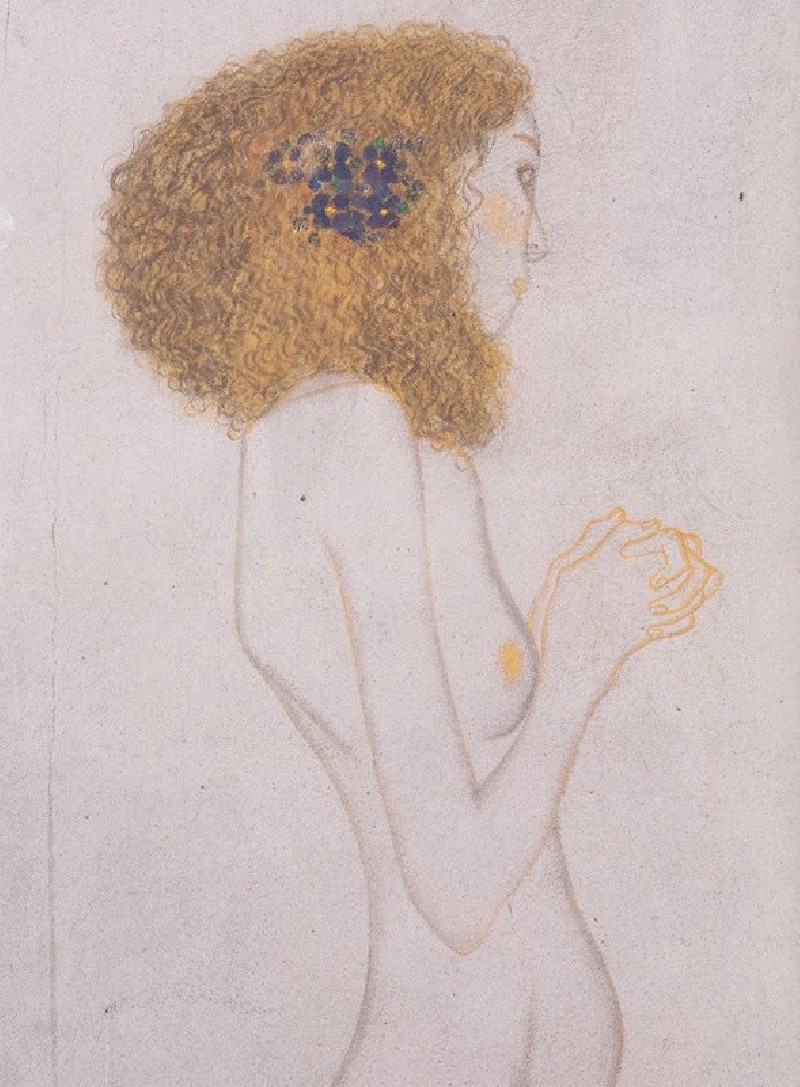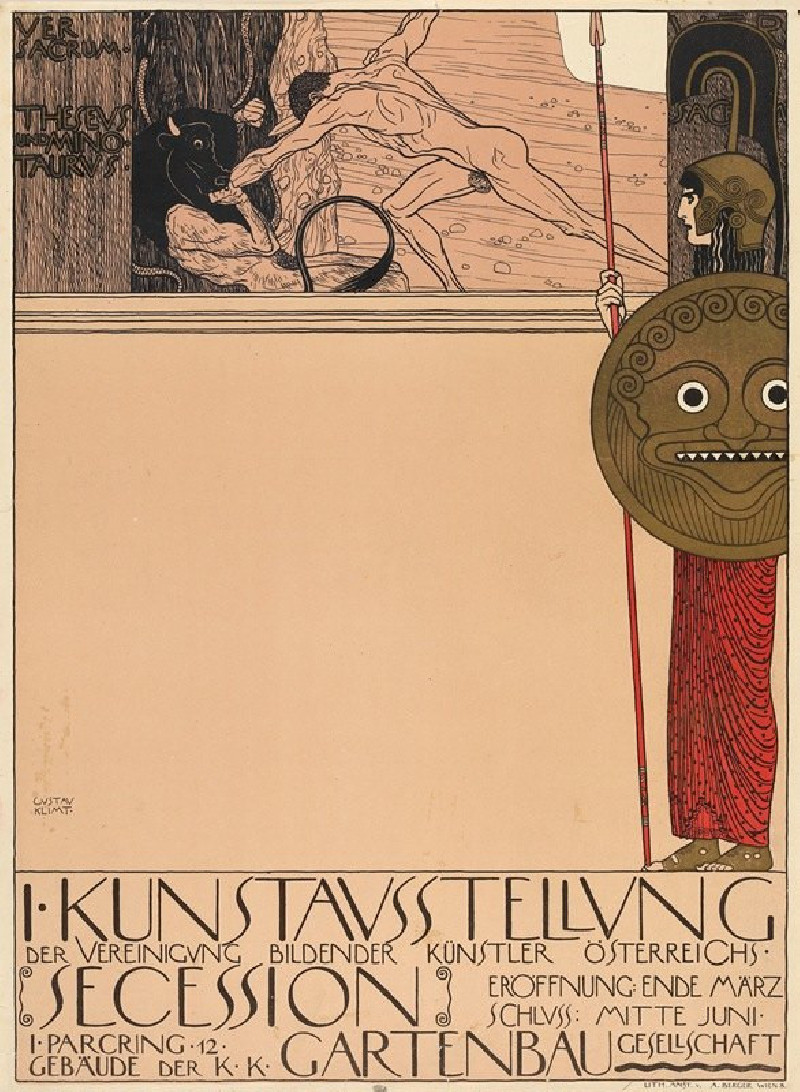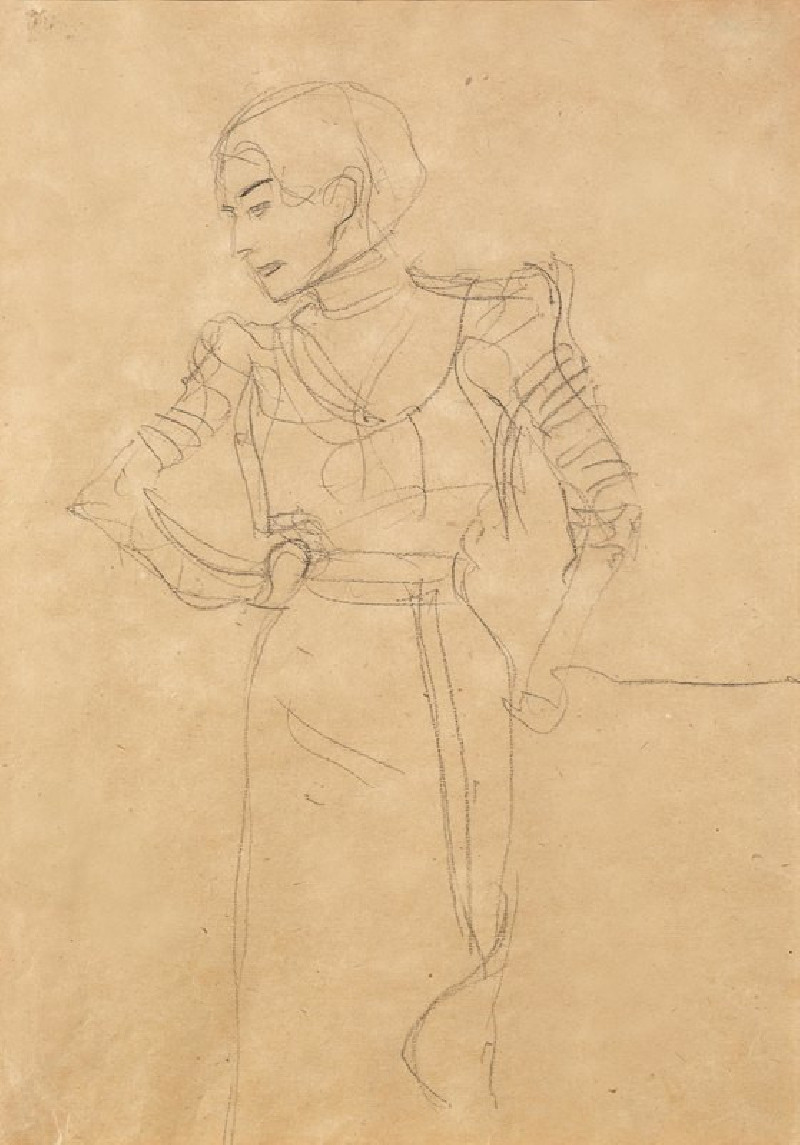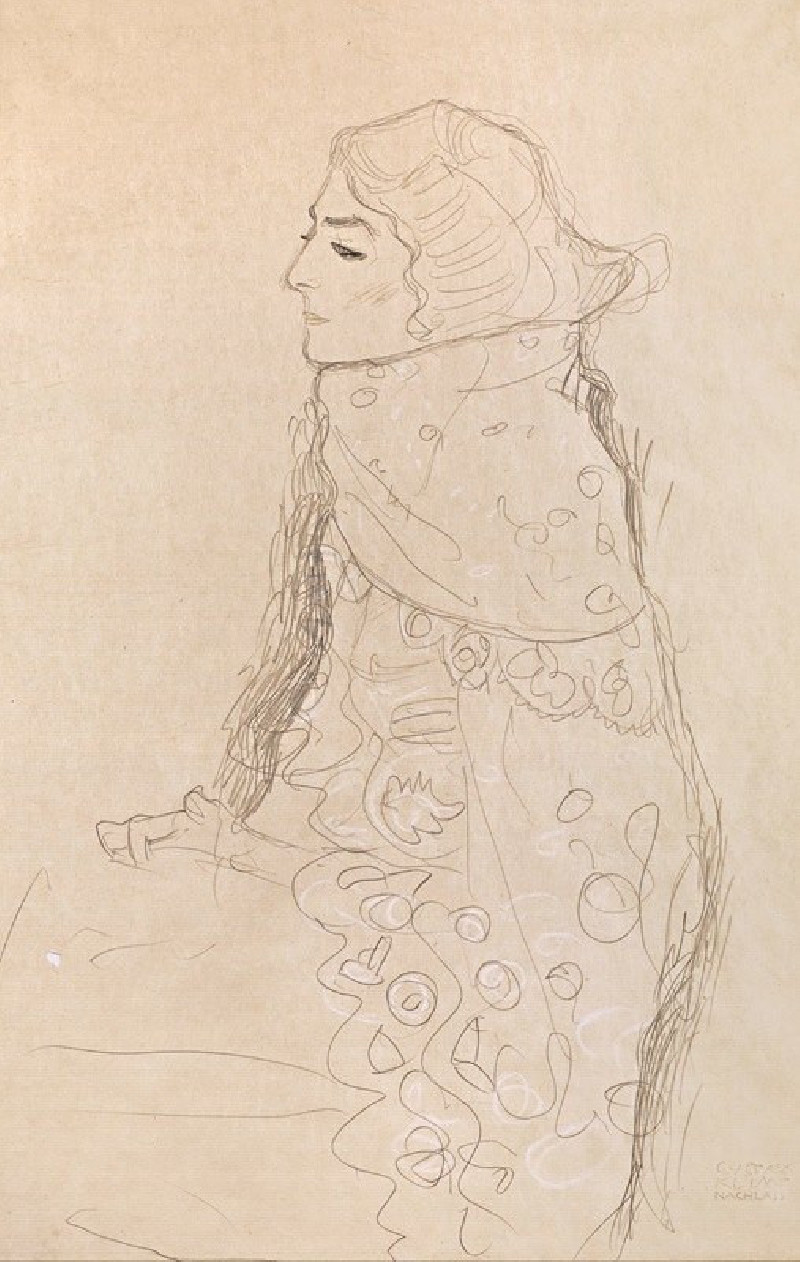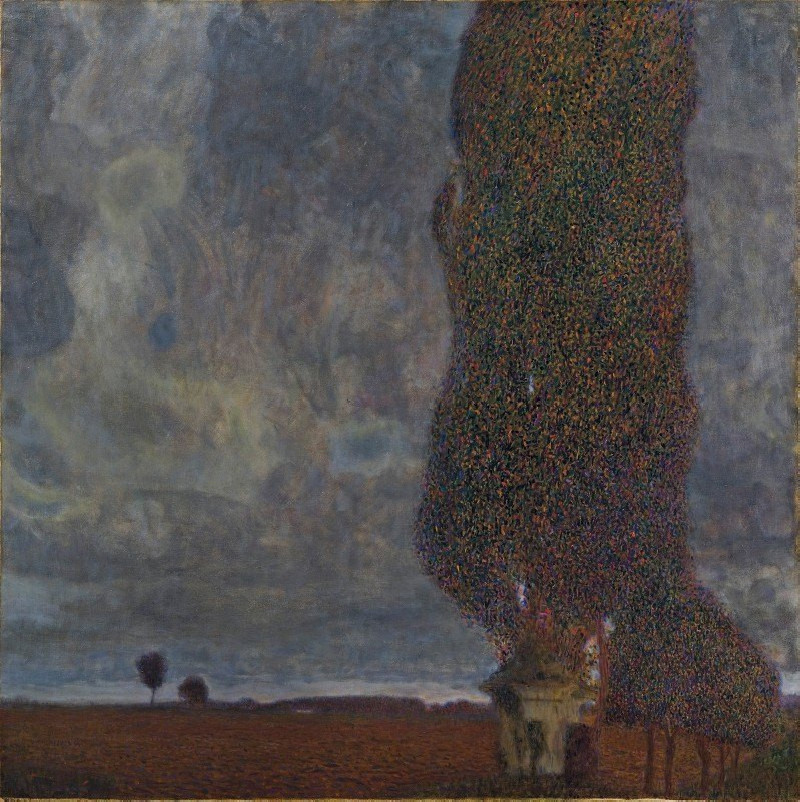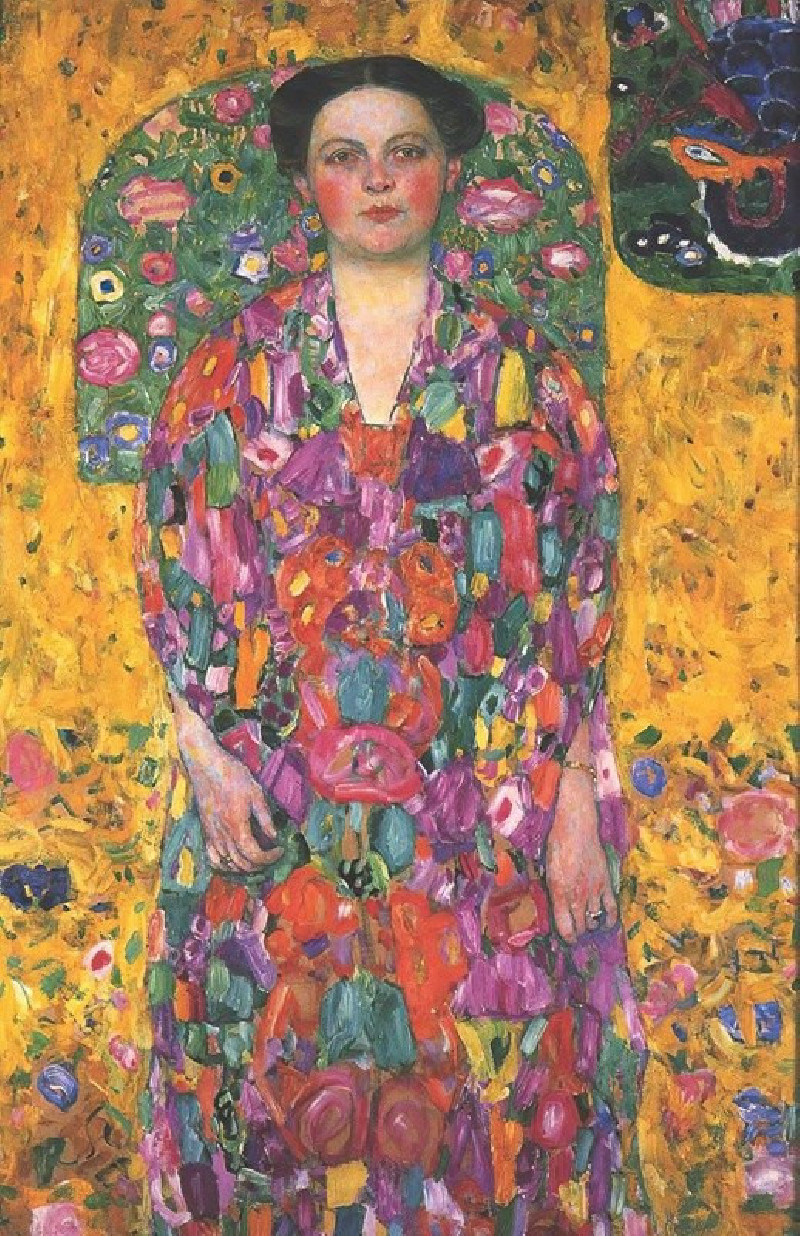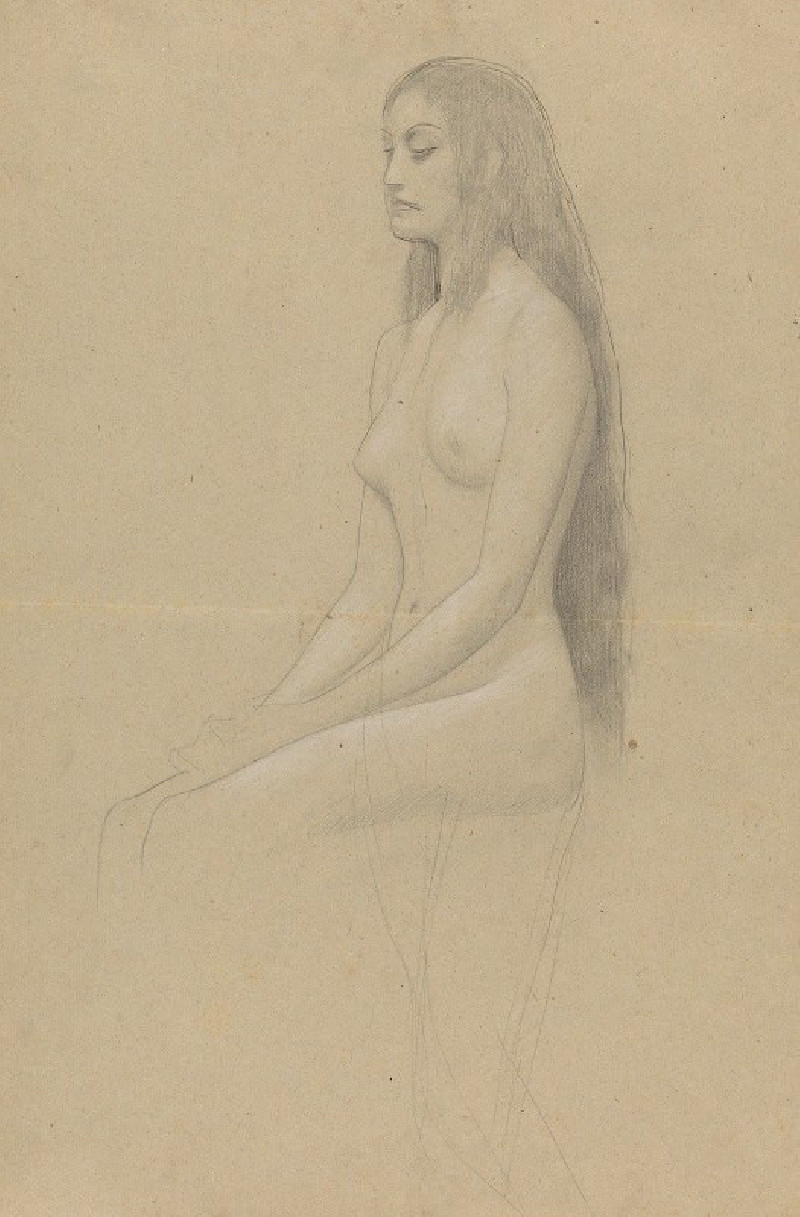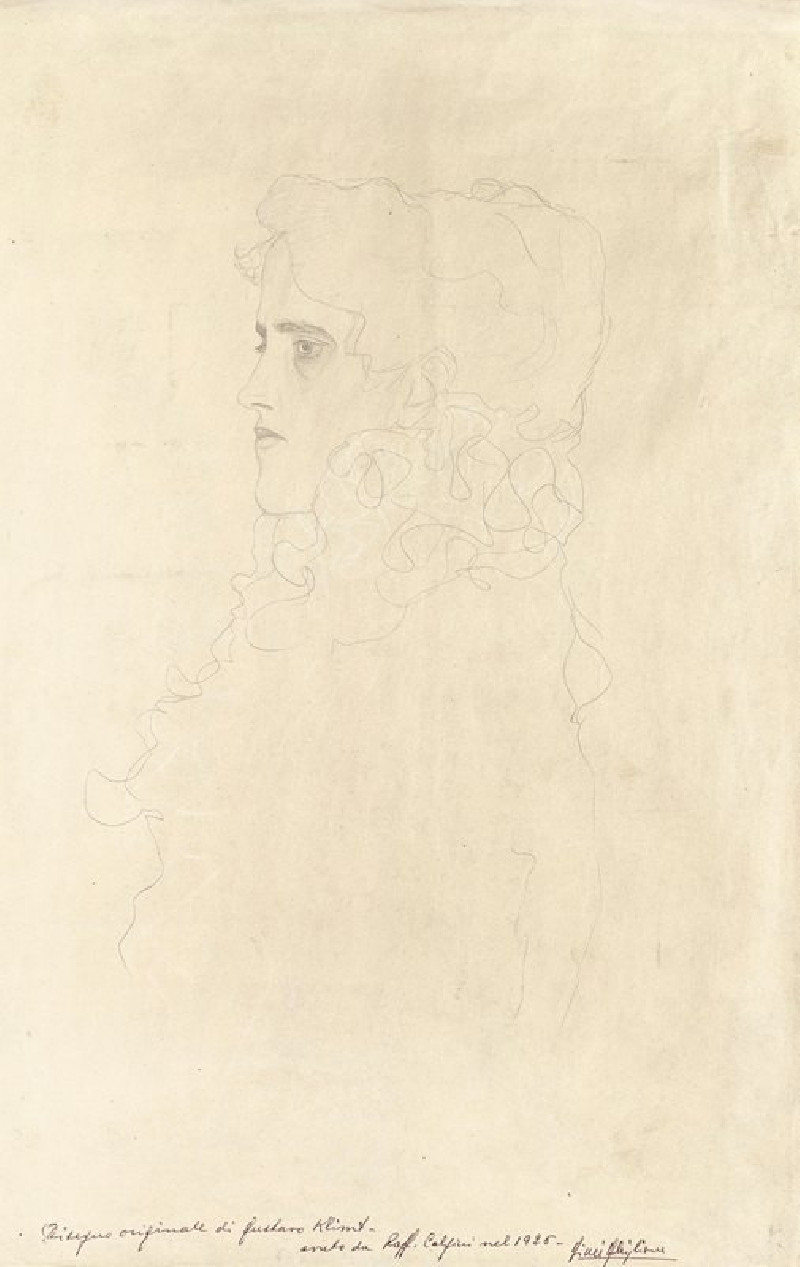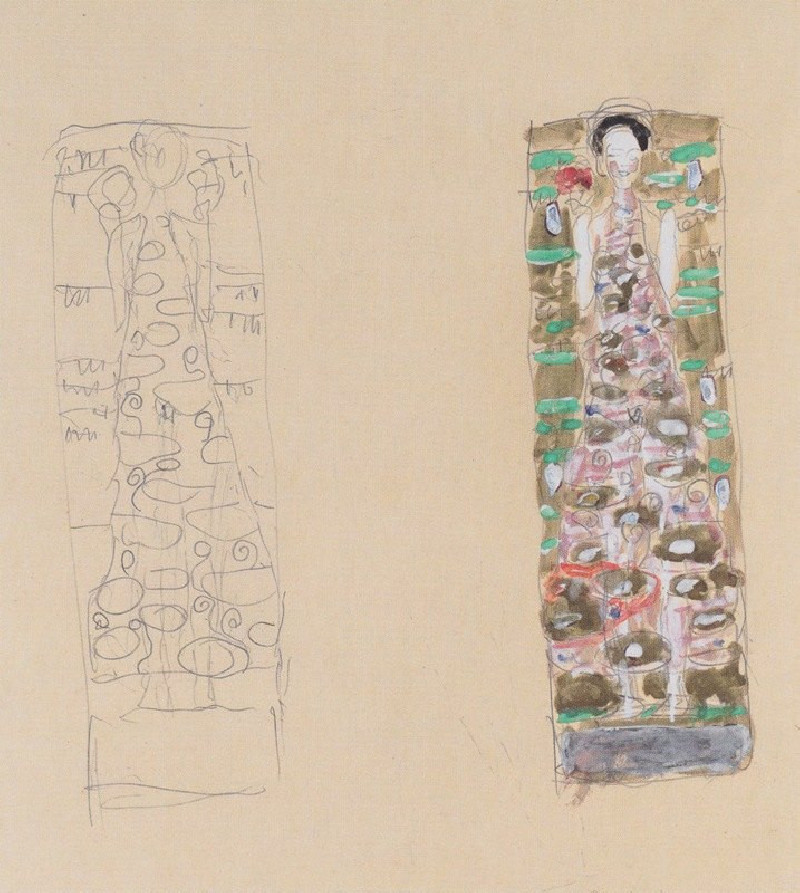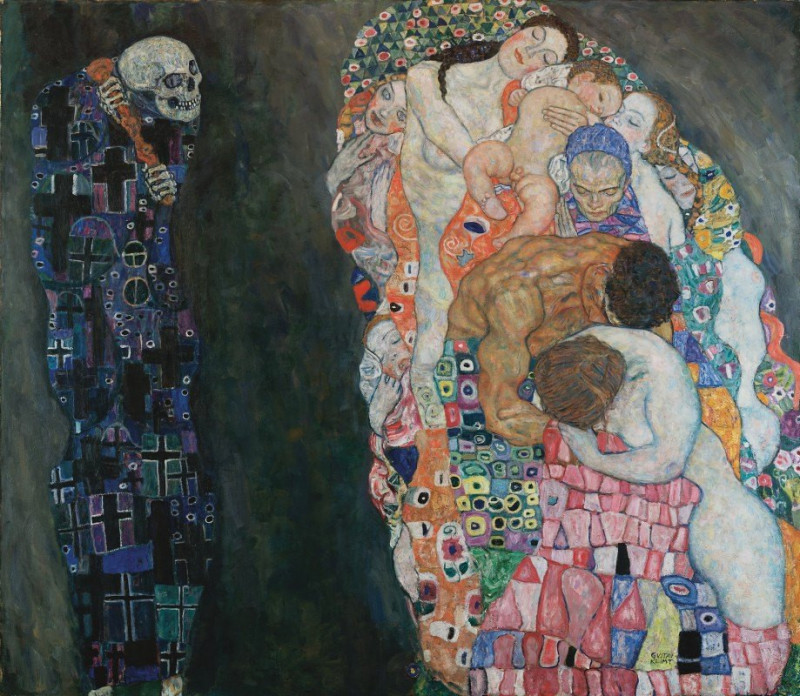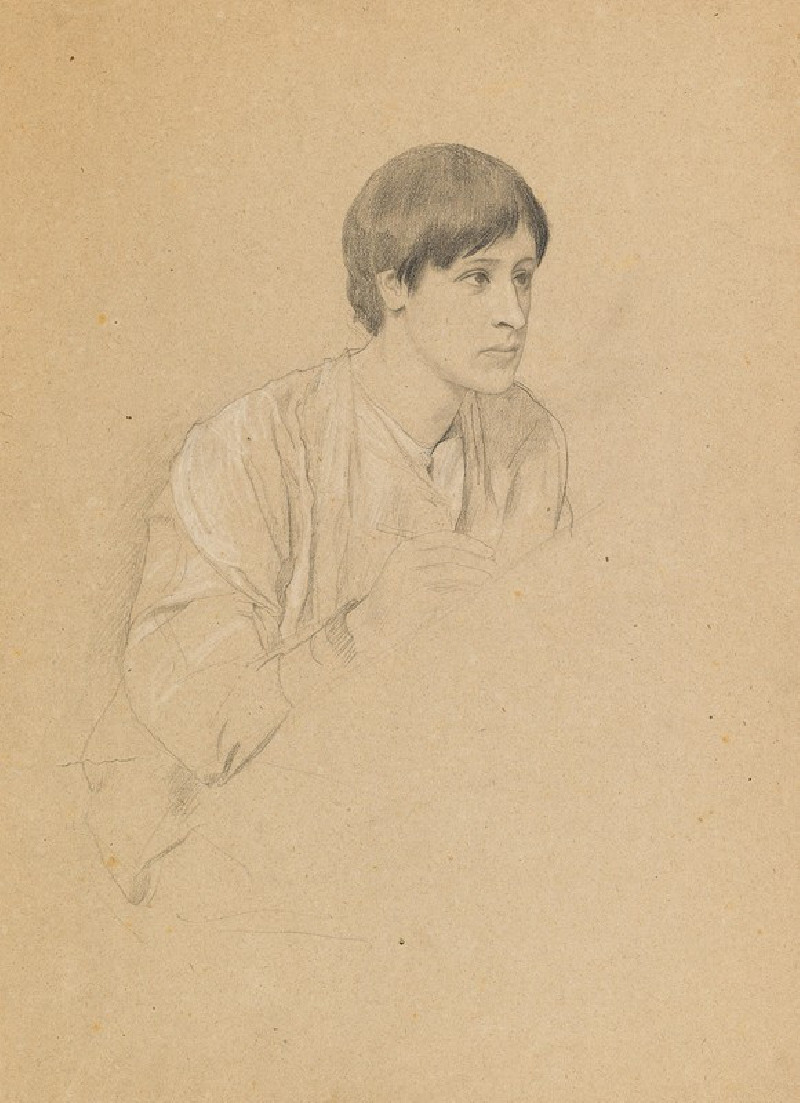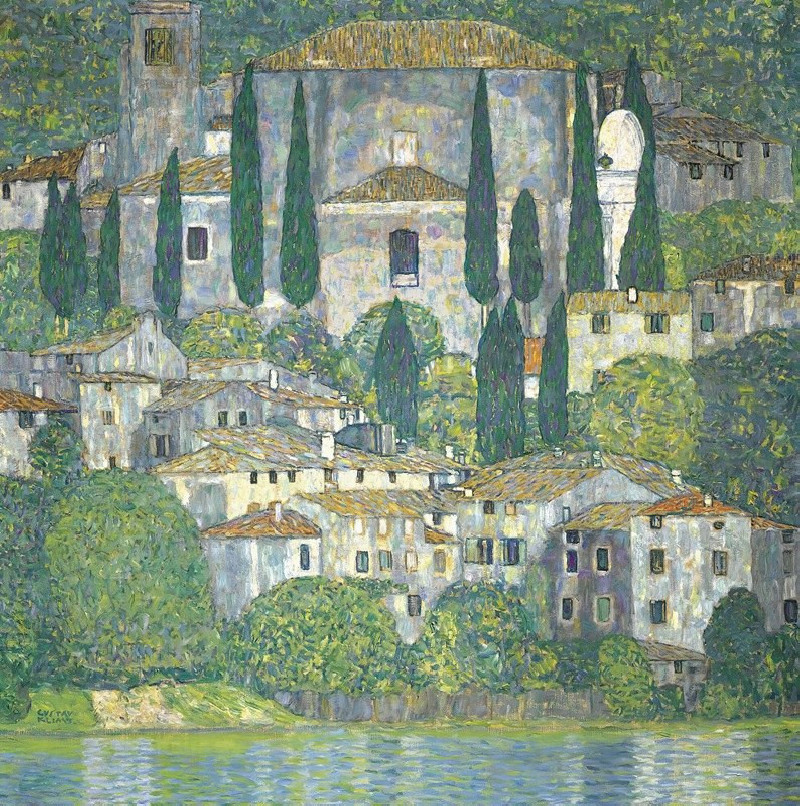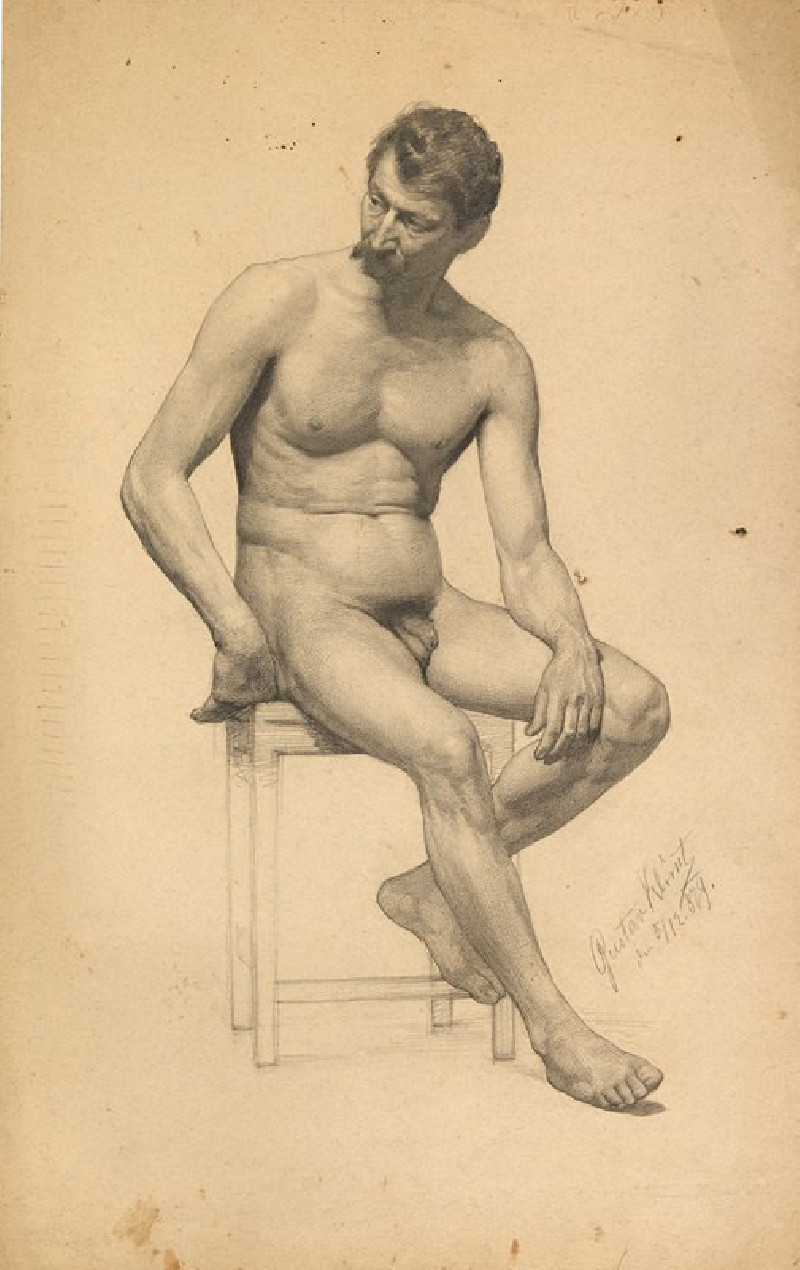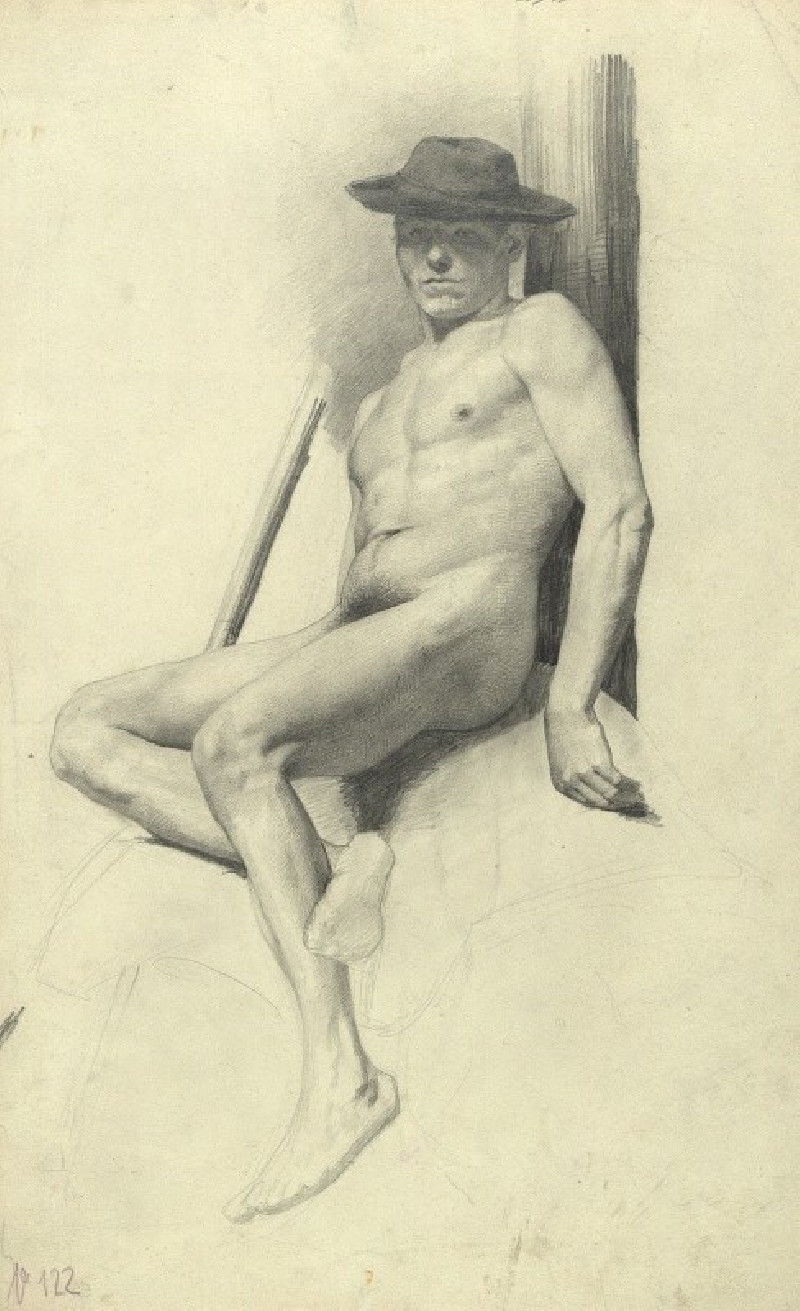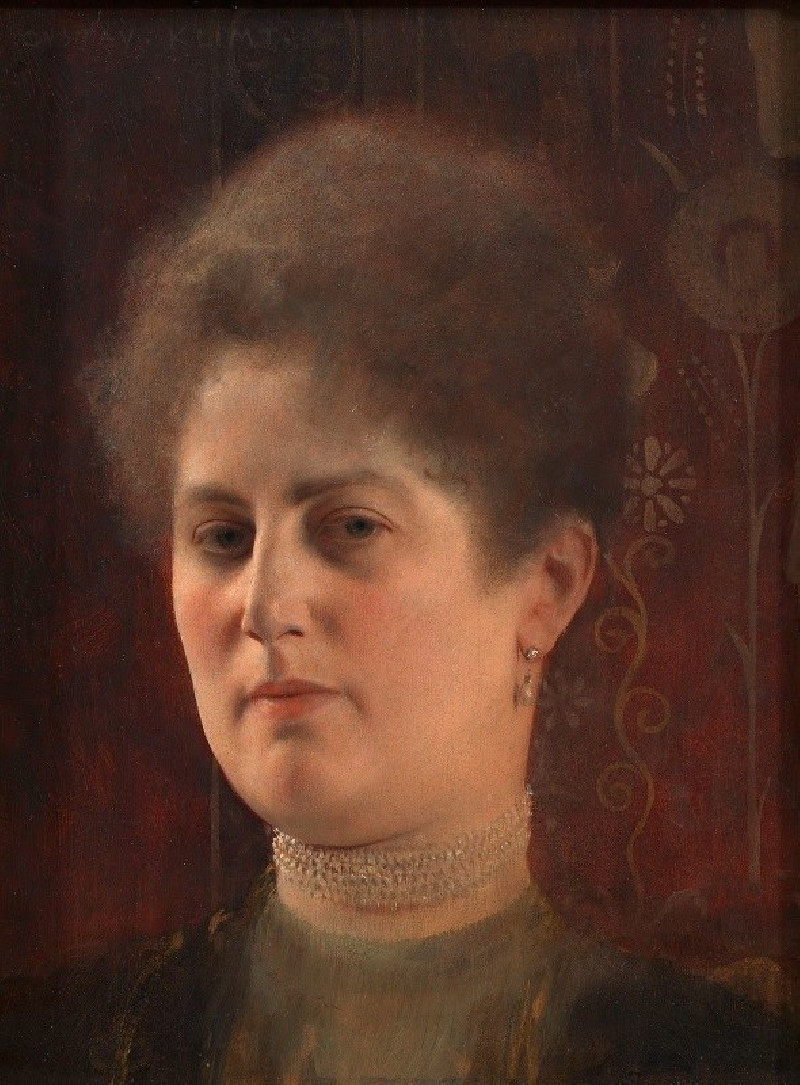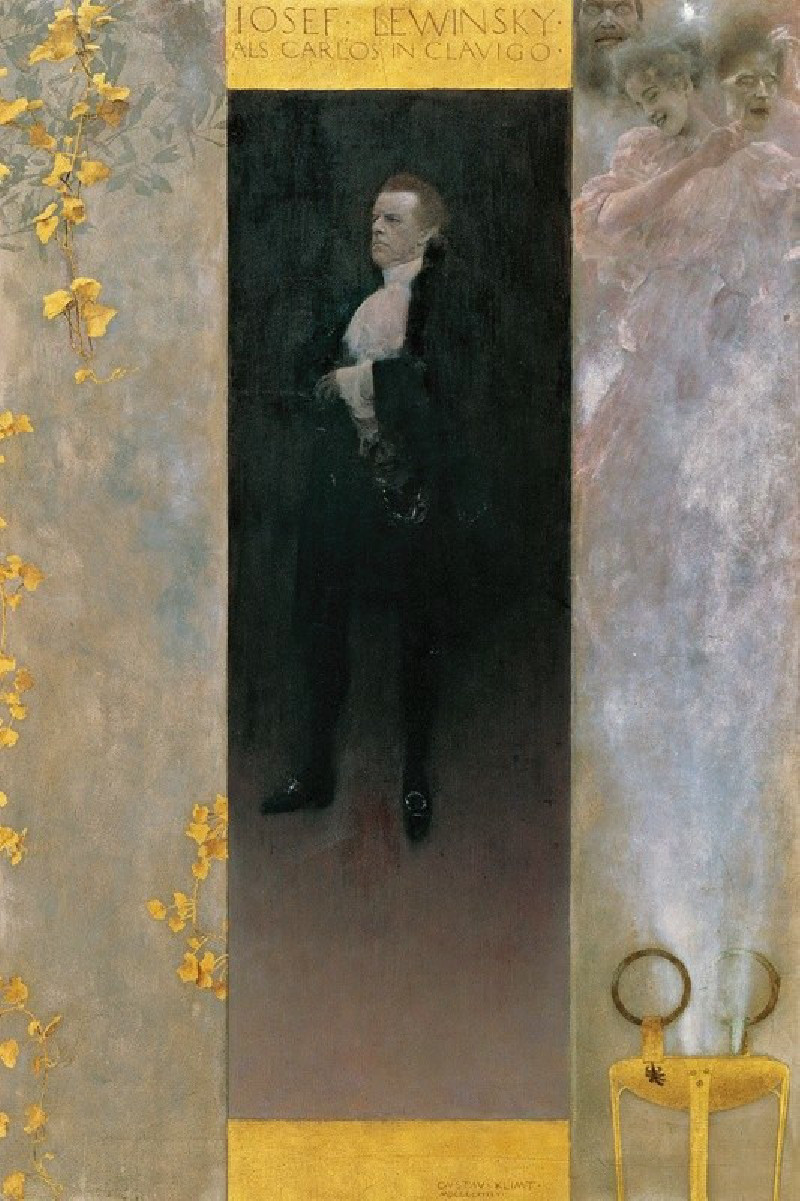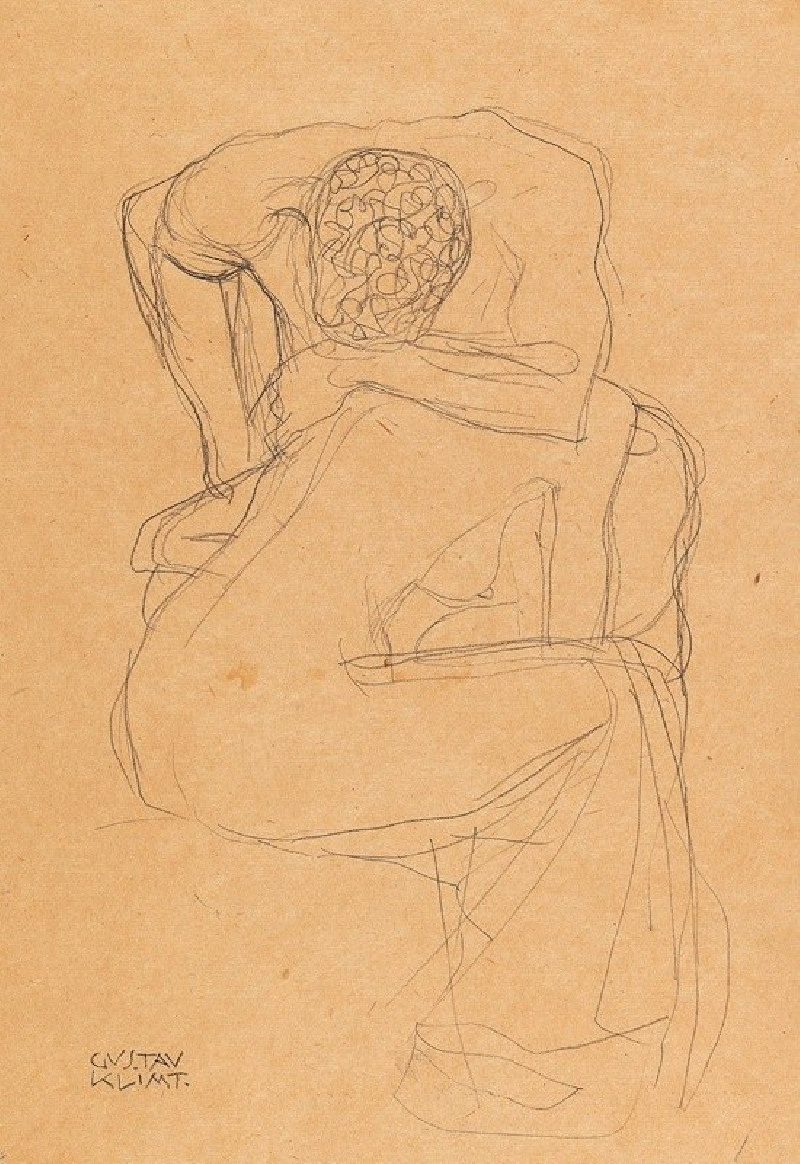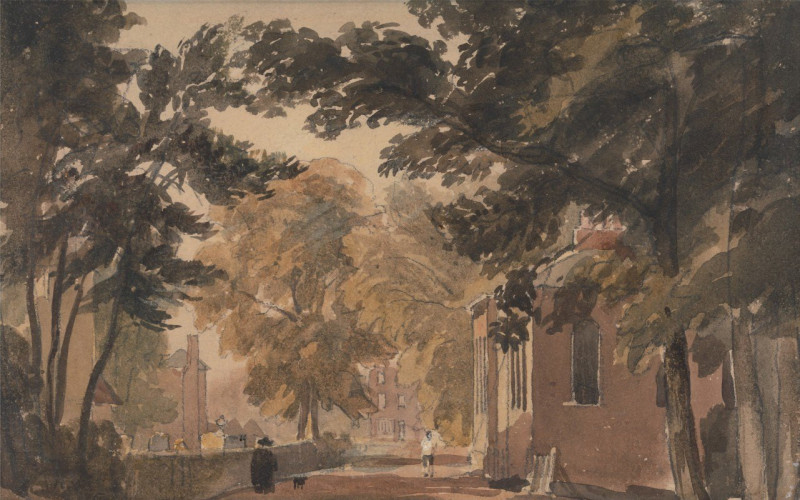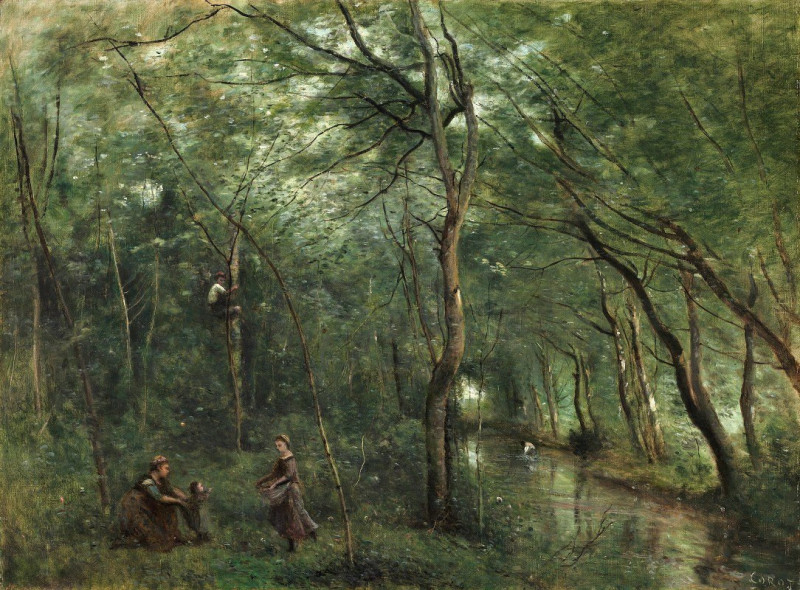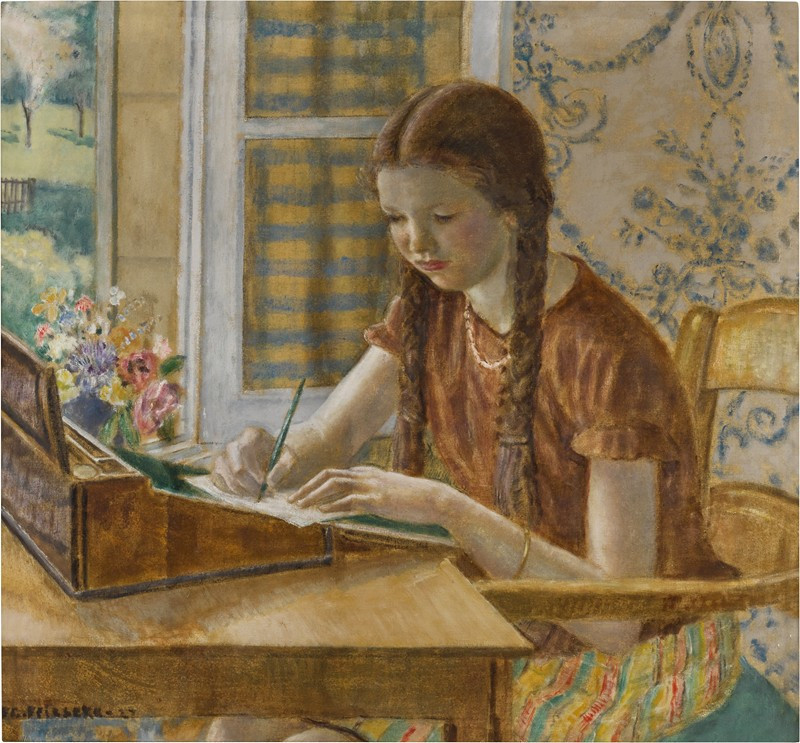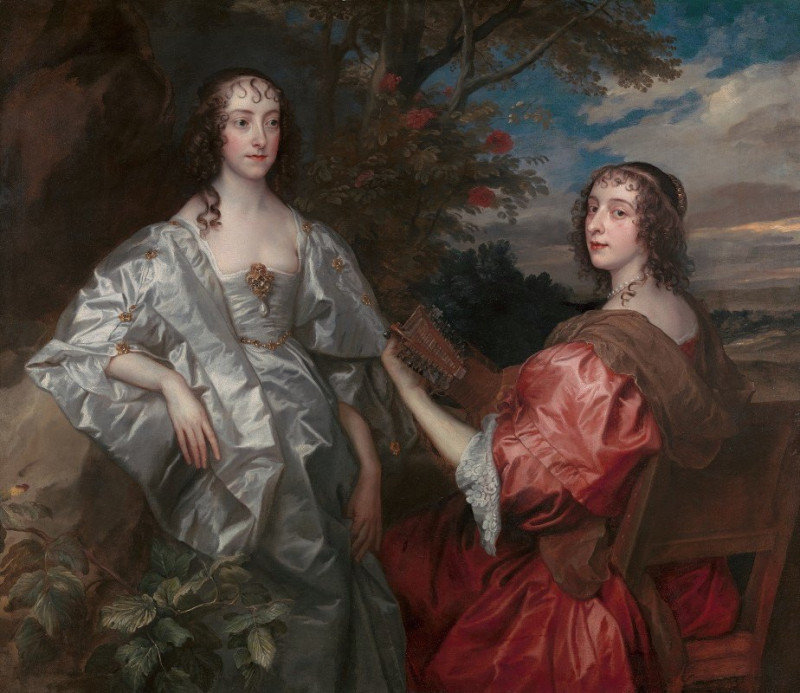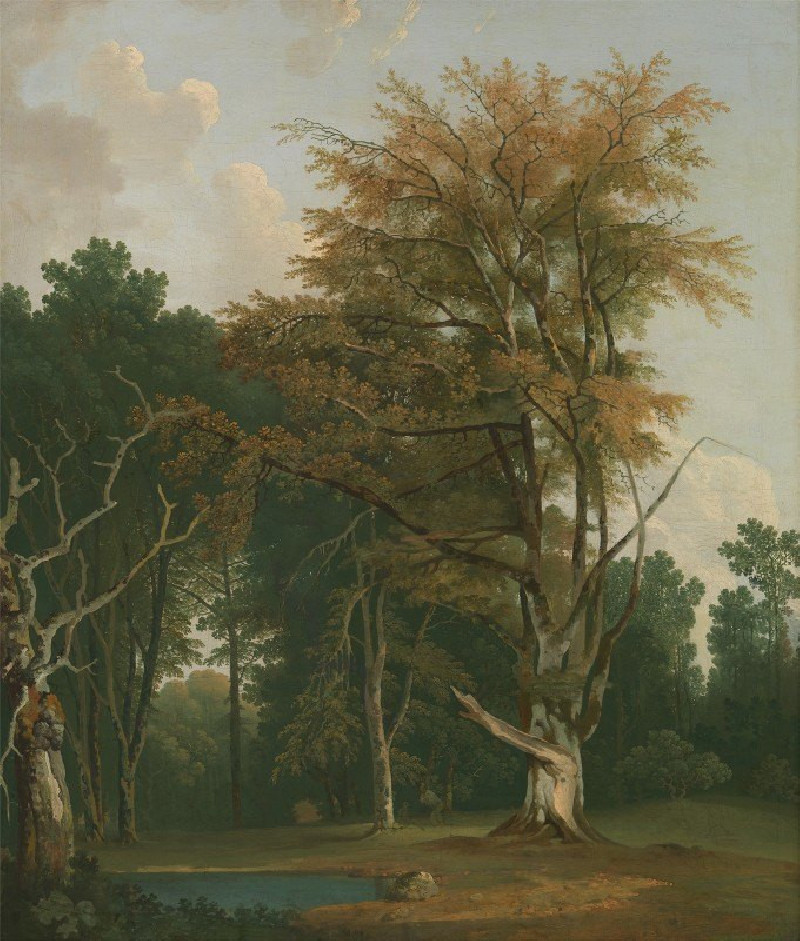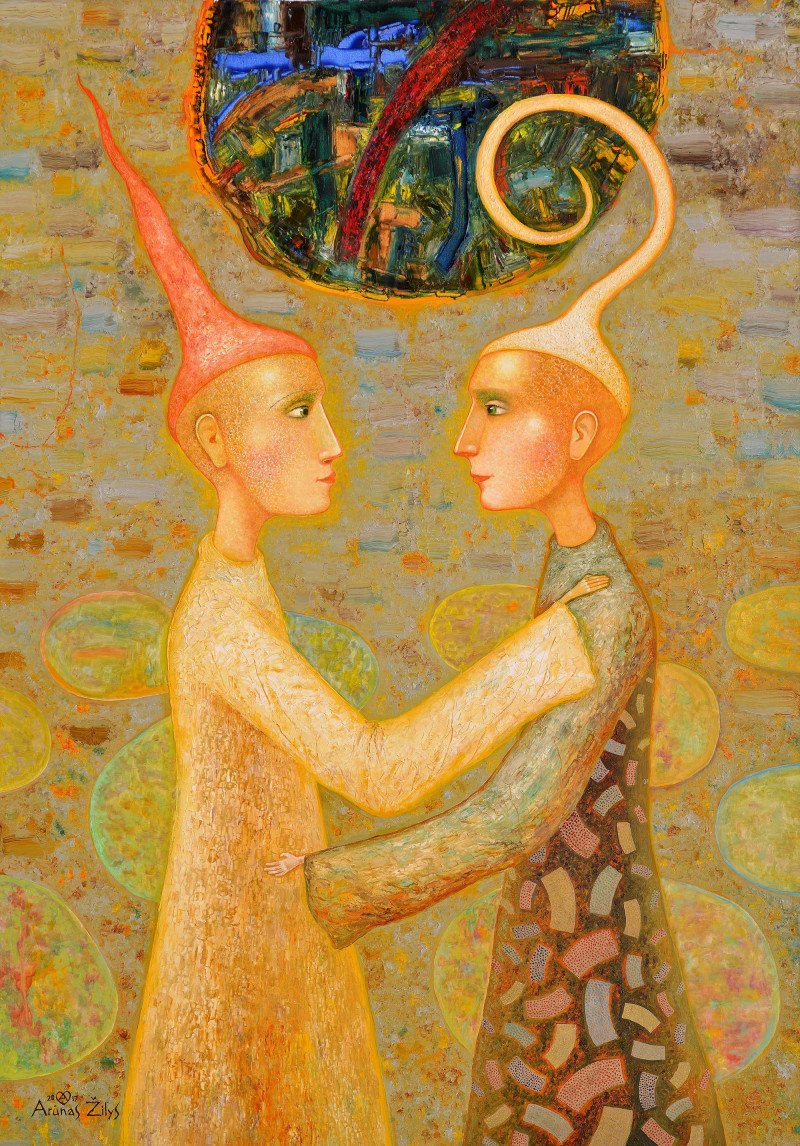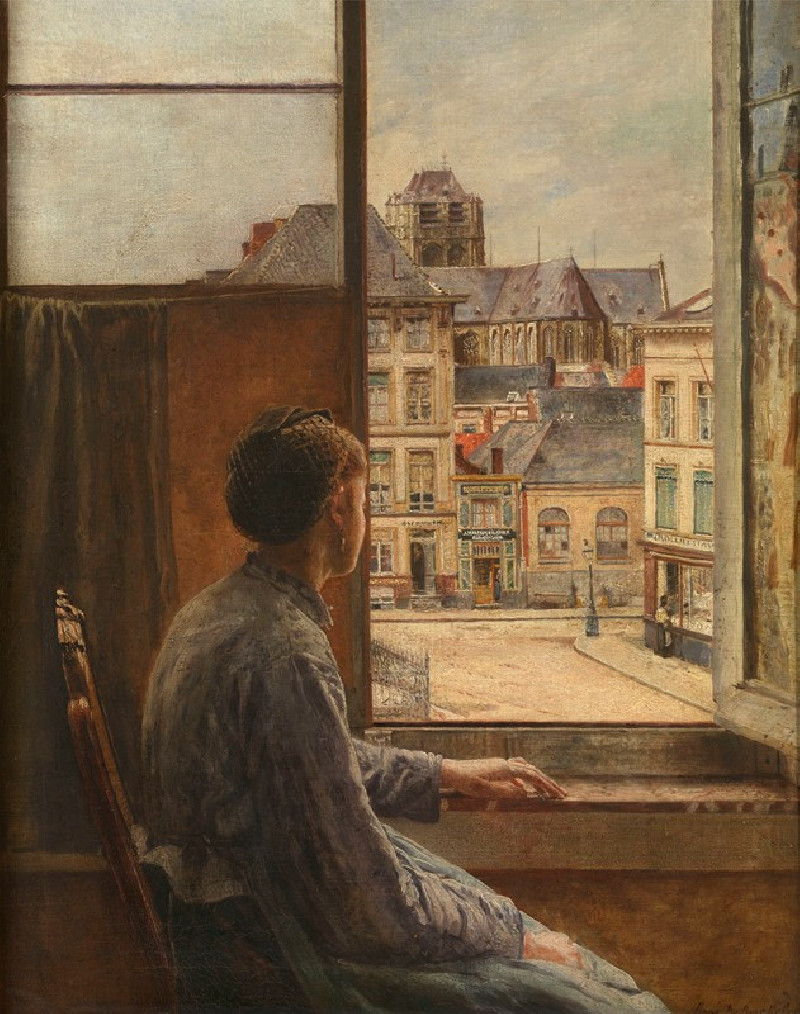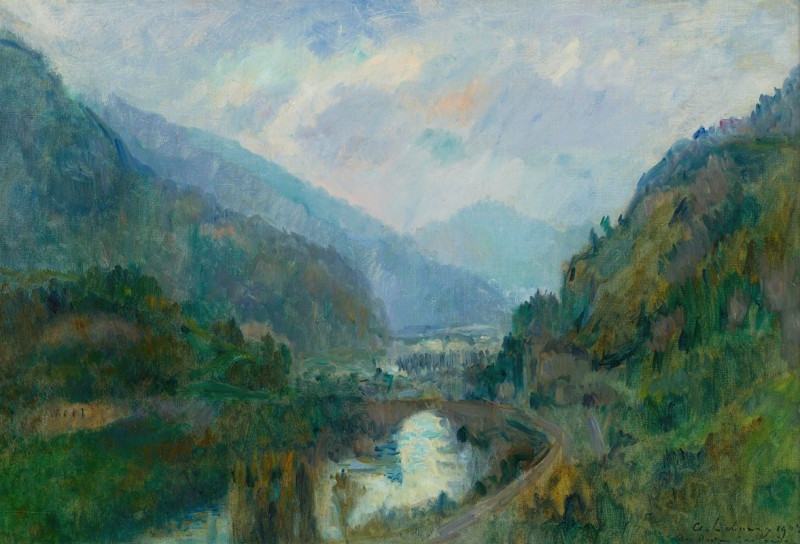Study for Portrait of Adele Bloch-Bauer I (1903)
Technique: Giclée quality print
Recommended by our customers
More about this artwork
On display is a fascinating glimpse into the preparatory phase of one of Gustav Klimt's most celebrated works, seen here in "Study for Portrait of Adele Bloch-Bauer I." This sketch, crafted in 1903, serves as an intimate precursor to the illustrious oil and gold masterpiece known as "Portrait of Adele Bloch-Bauer I."The drawing reveals a delicate yet determined study, where Klimt focuses on the form and posture of Adele Bloch-Bauer, his most famous muse. The lines, though unembellished, capture the flowing grace of her attire and the poised elegance of her stance. Intricately sketched details hint at the opulence that Klimt would later fully realize in the final painting.In this study, Adele is depicted in a long, ornate gown adorned with what will be resplendent details in the final painting. Klimt's signature style—his keen ability to blend realism with a surreal ornamental aesthetic—is subtly echoed in the fluid lines and the lightly suggested adornments. This piece not only underscores Klimt’s meticulous planning process but also allows us to witness the transformation from a simple sketch to a complex interplay of gold, patterns, and textures that defines his golden phase.This sketch is a treasure in its own right, offering insights into the artistic vision and technique of Gustav Klimt. It invites viewers to ponder the layers of creativity behind a masterpiece, providing a unique connection to the art and its creator.
Delivery
Returns
Gustav Klimt (1862–1918) was one of the greatest Austrian symbolist painters of the Art Nouveau era. Renowned as one of the most prominent founding members, and as a president of the Vienna Art Nouveau movement (Vienna Secession). His works were mainly paintings, murals, and sketches. Marked by his numerous erotic drawings, Klimt's primary subject were female figures, and at one point his work was even criticized as pornographic. Klimt found financial success in his "Golden Phase" with decorative techniques and the prominent use of gold leaf in his paintings.

